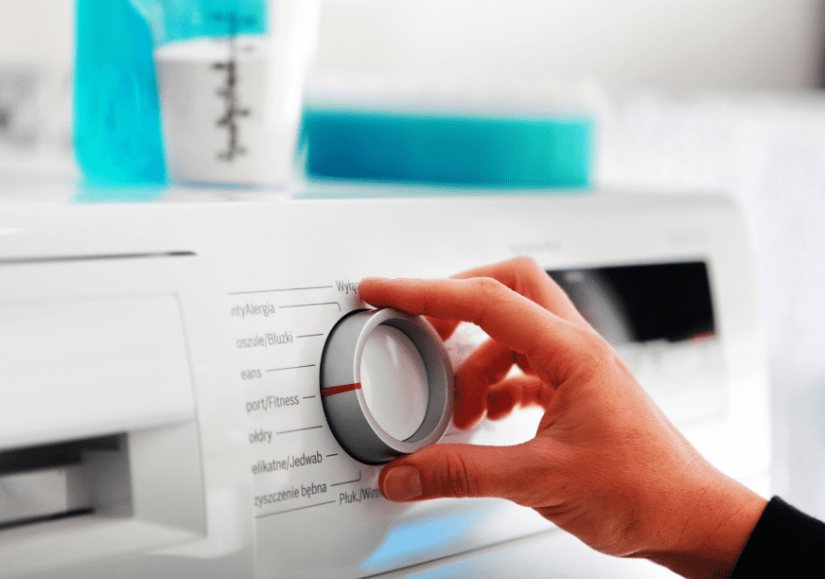One of the most irritating aspects of modern washing machines is how much water washers take to fill their tubs before beginning their wash cycles. Most people have been frustrated by this at some point and pondered removing the water level sensor so that they may simply fill up their washer with as much water as they need to get the job done without wasting any water. While how to bypass washing machine water level sensor would be extremely simple. However, some safety concerns make this a bad idea.
Washing machines have evolved to become high-tech and more efficient appliances in recent years. The appliances include a built-in sensor that automatically manages the water levels.
The Different Types of Washing Machines
Agitator for Top Loaders
Top-loading washers are the oldest type of washers still in use today. This classic washer has been around for decades and has firmly established itself as one of the most popular models.
The laundry is loaded from the top of the machine, hence the name. In the middle of the work basket, there is usually an agitator. This agitator provides the washing power. It swashes against the clothing that is being cleaned, eliminating dirt and stains as they rub against it. The control panels on this type of washer are straightforward and intuitive. However, because of its simplicity, wash cycles cannot be easily customized to match specific washing requirements. The top loaders feature very low vibrations when in operation.
Portable Washer by Black Decker – BPWM09W | BUY ON AMAZON
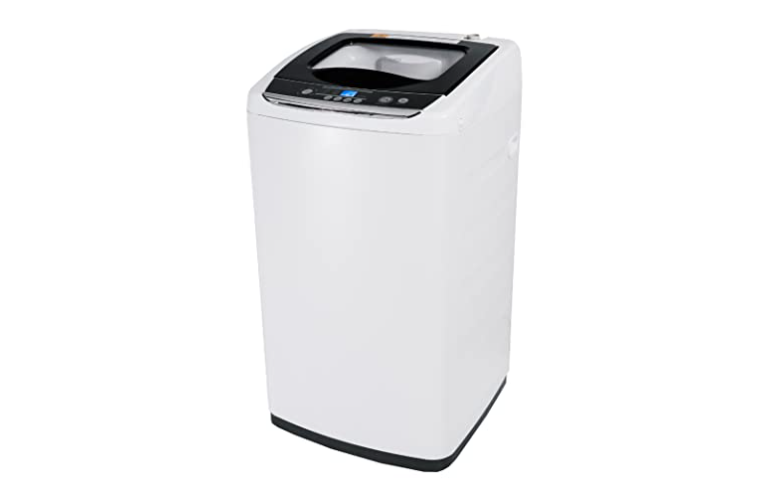
Washing Machine with Front Loading
Front-load washing machines, unlike top loaders, are loaded from the front of the machine. Unlike top loaders, they do not have agitators. The clothing is made to rub against one other during the washing cycle when the wash basket spins at a high pace. The washing cycle with front load washing machines is kinder on the garments due to the lack of an agitator.
Front-load washers may feature a confusing control panel that appears intimidating at first glance. With time, though, one becomes accustomed to them.
Sensors and automation are used in modern front-load washing machines to select particular and desired wash parameters. However, you can usually use manual settings if you don’t want to be bothered with unnecessary minutiae.
LG WM3488HW 24″ Washing Machine | BUY ON AMAZON
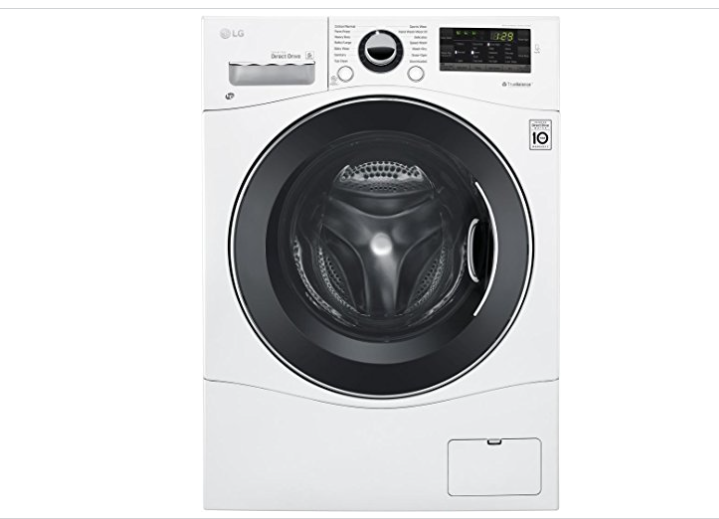
Impeller with a Top Load
These washing machines are also referred to as high-efficiency washers. Laundry is fed into these washing machines from the top, just as ordinary top loaders. These washing machines, unlike top loaders, do not have an agitator and instead use impellers.
TG23 Portable Washing Machine
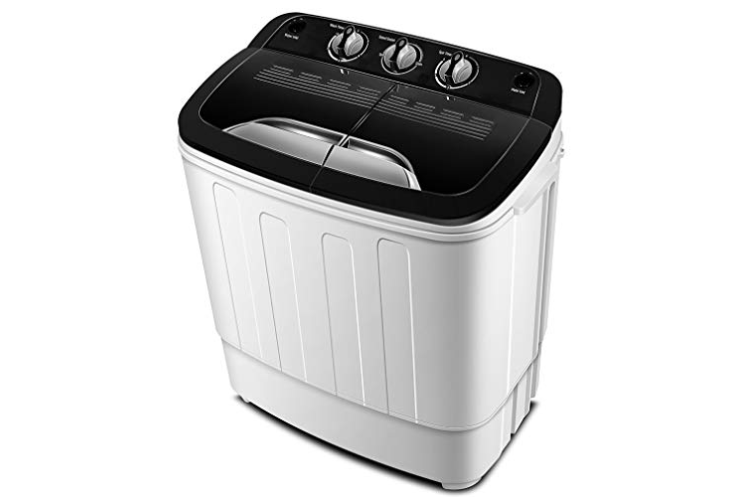
We can find the impellers in the wash bin’s bottom. Because of the bottom impeller’s velocity, the clothes slide back and forth. And it is the rubbing action of the clothes that allow the cleaning to take place.
How Does a Washing Machine Know When There’s Enough Water?
Air pressure senses the water level in washing machines. On the washing machine, they frequently discovered a pressure switch. The air in the pressure tube becomes compressed and trapped when the water fills the drum. Pressure switches receive a signal from this pressure that the water level has increased. Some machines have one level, while others have two or three. These sensors determine a minimum and maximum level for various cycles, ensuring that the right amount of water is used for the job.
Although this auto-sensing technology is often functional, it is not without limitations. Typically, the machine faults in the sense that it overflows. However, in some circumstances, it may not be large enough to clean your garments adequately.
How to Disable the Water Level Sensor in a Washing Machine
How to bypass washing machine water level sensor to save water and time? A washing machine water level sensor is a device that regulates the filling and emptying of water in a washer to prevent overfilling or soaking wet garments. It can be the most inconvenient mechanism if it hinders you from doing laundry quickly and efficiently, mainly if your laundry basket is empty of clean items.
Washing machines have evolved to become high-tech and more efficient appliances in recent years. Many homes now have high-efficiency washing machines, particularly those that have improved cost-effective and energy capabilities. The appliances include a built-in sensor that automatically manages the water levels.
Sensor for Water Levels
High efficiency (HE) washers, unlike older models, detect your laundry loads and calculate how much water is needed for each wash cycle. The goal is to cut down on both water and energy usage. The water level sensor is a feature you’ll love. It lowers your monthly utility expenditures, allowing you to save money.
So, how to bypass washing machine water level sensor? Here are a few easy methods to assist you in getting around the water level sensor and getting back to work.
How Does A Water Level Sensor In A Washing Machine Work?
The sensor is a device that automatically selects water levels for your washing load. Using a pressure regulator, it detects the volume of water in the washer drum. These sensors in specific washers don’t allow for manual control, so you’ll have to learn how to use your machine. Here is a look at how to bypass washing machine water level sensor works here:
- The hose’s wider end is attached to the tub’s bottom while it connects the narrower end to the switch control. When the water in the washer drum rises, the water level in the hose also rises. There is some trapped air inside.
- As the water level rises, the air in the hose is compressed. This causes a piston within the switch control to move, increasing the pressure inside the pipe.
- When the switch senses the presence of water in the tub, it immediately shuts it off. That’s some physics, but don’t get too hung up on the terminology.
A Complete Guide to Bypassing the Washing Machine Water Level Sensor
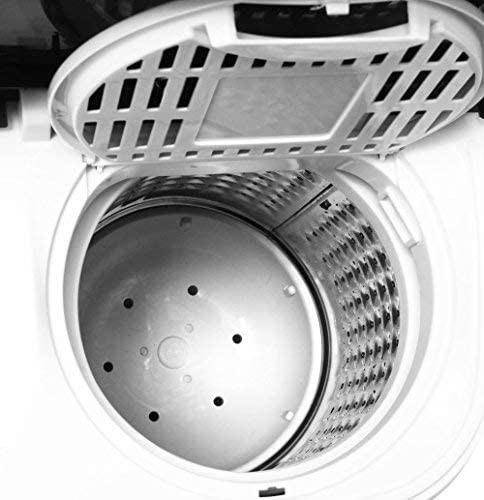
There are four techniques to avoid using a washing machine on how to bypass washing machine water level sensor:
- Increasing the weight
- Putting in a hose from the outside
- Making adjustments to the pressure switch
- Changing the options for water level
1 – Increasing the Weight
The water level sensor determines how much water your laundry requires based on its weight. As a result, raising the laundry’s weight is a simple technique to fool the sensor. Also, here’s a hint: the more bulky the clothes, the more efficient the spinning will be.
There are two ways to increase the weight of your load:
- Add old clean towels to the clothing in the machine drum — adding old clean towels to the clothes in the machine drum is one technique to increase the load on your machine. Please pay attention to the towel’s color, so it does not stain your clothes. It could be safer to use white towels. Increasing the amount of water in the clothing and allowing them to absorb before washing can help you achieve a heavier load. Because of the increasing density, the switch will be pressed, causing water levels to rise.
- Try utilizing the bulky/sheets control panel setting if none of the other options worked. It created the setting for washing large clothes and sheets, but there are no constraints on when you can use it. Any methods listed above will compel your washing machine to use extra water. However, remember that it’s best not to overload the machine to maintain an excellent load-to-water ratio.
2 – Installing a Water Hose Alternative
Despite how hard this process may appear, it is relatively simple. You can circumvent the water level sensor by installing an additional water supply. Try this approach if you’re looking for a quick DIY project. This process is best done in a top-loading washing machine.
You’ll require the following items:
- A divider
- Few hose covers made of plastic
- A hose that is 6 feet long
Instructions
- Turn off the hot and cold water faucets in your washing machine.
- Connect the splitter to the temperature water terminal on the washing machine.
- Make sure the splitter is securely attached.
- Connect one of the splitter’s apertures to the wash cycle hose.
- Now connect the 6-foot hose to the third channel of the splitter.
- While your washing machine fills with water, open the water supply valves to allow water to enter the hose. Make care to cap the hose while it’s not in use to keep it clean.
3 – Pressure Switch Adjustment
This procedure only works if the drain hose is not below the highest water level in the washing tub. If this isn’t the case, the hose may drain the water in the washtub.
The pressure switch’s case has a rubber diaphragm. As the water level in the washtub rises, the air pressure in the plastic tube connected to the diaphragm also rises. The diaphragm is compressed by the pressure, which turns off the water at the proper level.
Combined, both the pressure switch and the water level switch function. As the water level switch switches from low to high, a plastic spring-loaded disc presses inward. The disc will press inward at the highest water level switch setting. So, how do you change the pressure on the pressure switch? It is a straightforward task.
1st step
Locate and examine the water level switch. You’ll need to open the control panel to do so. The water level switch is behind the pressure switch. Some energy-saving washers have a second pressure switch for the rinse cycle.
To distinguish the water level switch from other switches, a rubber tube goes from the switch to the edge of the drum.
2nd Step
The set screw pressure can be increased or decreased. While on the dashboard, adjust the water level controls for the cycle. Ensure the drainer hose is connected to the drum with the highest water level; otherwise, it will siphon water out and leave it at the lowest level.
3rd step
Adjust the spring-loaded disk’s tension. With a screwdriver, adjust and tighten the spring-loaded disc inwards. This procedure can bypass the water levels sensor and increase the water levels.
4th step
Place the set screw in the hole. Use thread-locking glue to secure the set screw in place. This will keep the machine from becoming loose as it vibrates.
4 – Options for Changing Water Levels
Many people overlook this possibility. This isn’t a ruse or a workaround. Most of us have this option built into our washers, but we forget about it for some reason. In addition, many washing machines provide a rinse option.
If the water level option doesn’t work, try using it with the additional rinse option. Raise the water level to its highest setting to allow for an extra rinse. It equipped washers with several sensors to ensure that they operate efficiently and consume less water and energy. You can wash without being concerned about how much water control you have.
The machine controls the water levels. However, there is no way to switch off the water level sensor on a washer. The machine will not be able to achieve a high level of wash efficiency. It will either have a small amount of water or a large amount of water.
How Can I Get My High-Efficiency Washer To Use More Water?
If your high-efficiency washing machine lacks a water level valve, there is a straightforward technique to trick it into using more water to wash your clothes!
- Tally up the amount of laundry you’ll be doing
- Fill the washtub with twice as much water as the load.
- Allow the water to soak into your clothes.
- You can now begin the washing process!
You might wonder what the trick is. Let’s say you have two pounds of dirty garments that must be washed. After soaking it in four pounds of water and loading the wet clothing into the washing barrel, your washing machine will assume you loaded it with a six-pound load! It will also respectfully fill the barrel with the water required for that weight!
This method for hacking a washing machine to consume more water works well with washers lacking water-control sensors. You could manually pick how much water you need for each load if your washing machine included a water level switch adjustment. For example, suppose you needed to wash some extremely soiled garments.
However, because most of our washing machines lack such an option, we must resort to such methods to get around the washer’s water level sensor.
What Else Can You Do to Deceive Your Washing Machine’s Water Level Sensor?
You’re mistaken if you believe the above strategy is the sole way to get your washing machine to consume more water. As an alternative, there is another equally effective strategy. It’s helpful if you don’t have time to soak your clothes. So, what are your options?
- Because the washer’s water-level switch will only increase the amount of water when the load in the barrel is bulky, all you have to do is make the garments you’ll be washing bulkier!
- Old thin towels will work nicely for this. Just ensure they’re already clean and the colors won’t bleed. Remember, the purpose is to make the load appear heavier, not wash more clothing!
- Furthermore, such a method will provide you with an additional benefit. When the load is bulky, the washing machine is better balanced during spinning, resulting in more efficient spinning.
How to Determine Whether Your Water Level Switch Is In Working Order
You should inspect your washing machine sensor for any possible electrical faults to see if it has any issues. To do so, you’ll need a multimeter with an OHMS X 1 set.
Your water level switch, as you can see, has three terminals. By identifying and disconnecting them in pairs, we propose that you test them. To begin, connect the multimeter probes to terminals one and two, record the reading, and continue testing others in pairs. Regarding possible outcomes, the reading should either be infinite (indicating no continuity) or close to 0.0. (Which means continuity). If your washing machine’s water level is correct and works correctly, it will have two pairs of terminals with no continuity and one pair with continuity.
So those were the most effective techniques to hack your innovative washing machine and make it give out more water than is required to wash a particularly filthy batch of clothes. Because none of these procedures can harm the appliance, you can use any of them or combine the ones that can. Even if your machine does not have a pre-installed option to choose the amount of water needed, you will always have thoroughly washed garments.
Why Isn’t The Water Level Sensor On My Washing Machine Working?
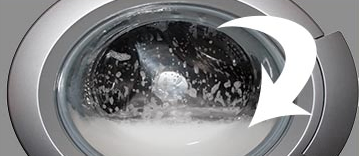
There could be a problem with the water level sensor if your machine isn’t filling with enough water or draining correctly. Before attempting to override the washing machine‘s water level, it’s critical first to troubleshoot these difficulties. You might not want to make things worse.
Washing Machine Doesn’t Have Enough Water
A broken water level sensor can cause insufficient water in the drum. Check if there’s a problem with the water level switch itself. It may necessitate the services of an electrician or a certified repair person. You may, however, try this yourself if you have any electrical understanding. Turn off and disconnect your washing machine before getting started to avoid electrical shock.
This is where your multimeter comes in handy. Find and detach the wires that connect each terminal to the circuit’s switch.
For each of the three terminals, check for continuity in pairs. To do so, connect terminals one and two with the probes then one and three, two and three. There should be no continuity between two pairs, but there should be continuity between one pair.
If There Is Continuity between the Other Pairs, the Switch Is Broken and Has To Be Replaced
There may be nothing wrong with the switch, but your machine isn’t filling with enough water. In that situation, there are a few potential hacks you can try:
Examine the water inlet valve:
A water inlet valve has screens that prevent the trash from entering your machine. Make sure your screens aren’t clogged or dirty. You can take them out and clean them with soapy water, immediately solving your low water problem.
It’s possible that you don’t have adequate water pressure:
For your inlet valve to perform correctly, it needs to be at least 20 psi. Make sure you have adequate water pressure. If this is not the case, you may need to call a plumber.
The Washing Machine Isn’t Draining Correctly
If your washing machine isn’t draining correctly, the problem is almost certainly with the drain hose. The hose may have become clogged or bent. Check for clogs and clear them out if any are present. After that, check sure the hose isn’t kinked by adjusting it. Your machine should drain correctly right away.
If That Doesn’t Work, Try The Following Suggestions:
Test the lid switch assembly:
The water will only drain from a top-load washing machine if the lid is closed correctly. To see if the machine spins and drains, manually push down on the lid. If that doesn’t work, try extending the lid’s stem such that it presses the switch. You may, however, require a new lid switch.
Dirty coin trap:
Some washing machines contain a coin trap that collects the trash and prevents it from draining. Clean out your machine’s coin trap. It might be able to solve your drainage issues right away.
Water level sensor:
Check the water level sensor with a multimeter once again in case there’s a problem.
Contact the manufacturer if none of the following solutions work and your machine is still not draining properly. They may send a technician to inspect and repair your washing machine. The warranty may cover it!
Conclusion
How to bypass washing machine water level sensor? Many buyers have raised this question online by purchasing washing machines and machine parts. The water level sensor switch, as we all know, detects the water level in the washing machine drum and sends a signal back to the control board. If you don’t get a signal from the water level sensor, you’ll need to skip or change it. If you don’t need the water level indication on your washing machine panel display anymore, there are two ways to bypass it.
Frequently Asked Questions
What Should I Expect to Pay for a Washing Machine?
A: It depends on your budget; new washing machines are available in various pricing ranges. Remember, though, that “you get what you pay for.” Washing machines that are dirt-cheap will not have top-of-the-line features.
Is it possible to find a washer without a sensor?
A: Yes, specific top-loading machines with agitators lack sensors and must be filled manually.
Is it possible to manually add water to the washing machine?
A: If you have rain or other stored water, you can manually fill your top load washer for the wash cycle. To do so, go through the following steps: Remember that half of the water is used during the wash cycle and a half during the rinse cycle.
